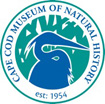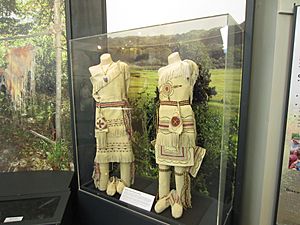Cape Cod Museum of Natural History facts for kids
 |
|
| Lua error in Module:Location_map at line 420: attempt to index field 'wikibase' (a nil value). | |
| Former name | Cape Cod Junior Museum (1954–1959) Cape Cod Junior Museum of Natural History (1959–1962) |
|---|---|
| Established | 20 February 1954 |
| Location | 869 Main Street, Brewster, Massachusetts, United States |
| Type | Natural history, archaeology |
The Cape Cod Museum of Natural History is a cool place in Brewster, Massachusetts. It teaches you all about the natural world and old history of the area. Imagine exploring a main building full of exhibits! You can also visit an outdoor butterfly house. The museum has over 400 acres of land with fun walking trails.
Contents
Discovering the Museum's Past
The idea for the Cape Cod Museum of Natural History started way back in 1954. It was first called the Cape Cod Junior Museum. Its main goal was to teach kids and grown-ups about local plants, animals, and ocean life. A famous nature writer named John Hay was its president for many years.
Finding a Home
At first, the museum didn't have a permanent home. It created exhibits that could travel to local schools. In 1956, it opened a temporary spot in the Brewster Town Hall. Two years later, in 1958, the museum bought its first piece of land. This land was 37 acres in the Stony Brook Valley. In 1959, the museum changed its name to the Cape Cod Junior Museum of Natural History.
Growing and Changing
The museum moved to a tent on its new land. Its first permanent building was built in 1960. Today, this building is used as the Summer Pavilion. In 1962, the museum changed its name again to the Cape Cod Museum of Natural History. More space was added in 1968 for offices and exhibits. A library, named the Clarence Hay Library, was also opened. In 2016, the museum added a butterfly house and a Pollinator Path. These help visitors learn about important pollinators like bees and butterflies.
Exploring the Museum's Exhibits

The main museum building is quite large, about 17,000 square feet. The museum owns 80 acres of land. It also sits next to 320 acres of town and conservation land. This huge area has many different natural places to explore. You can find pine forests, salt marshes, and even a barrier beach. There are also beech forests and a small river called Stony Brook. This river is famous for its herring run in the spring! The museum has three trails for you to walk and explore.
What You Can See Inside
The museum has many cool exhibits about local nature and history.
- Aquarium: See over eighty different kinds of local fish and sea creatures.
- Butterfly House: Walk among beautiful butterflies.
- Beehives: Learn about busy bees and how they make honey.
- Bird Collection: Look at taxidermied birds and wooden birds carved by Eldridge Arnold.
- Marshview Room: Use binoculars to watch birds in the marsh. A screen shows a live view of an osprey nest!
A Look into the Past
The Stony Brook Valley has been home to people for about 10,000 years. The museum's history exhibit tells you about the Wampanoags. They were the first people to live here. You can also learn about the English settlers who arrived later. The exhibit shows how factories grew in the valley in the 1800s.
Whales Up Close
The museum also has two giant inflatable whales! There's a 44-foot humpback whale and a walk-through gray whale. These are used to teach visitors all about these amazing ocean giants.
Learning and Fun Activities
Beyond its exhibits, the museum offers many ways to learn. They have summer programs just for kids. There are also classes and lectures for all ages. You can even watch live webcams showing nesting birds!
See also
- Stony Brook–Factory Village Historic District
- List of museums in Massachusetts
- List of nature centers in Massachusetts


